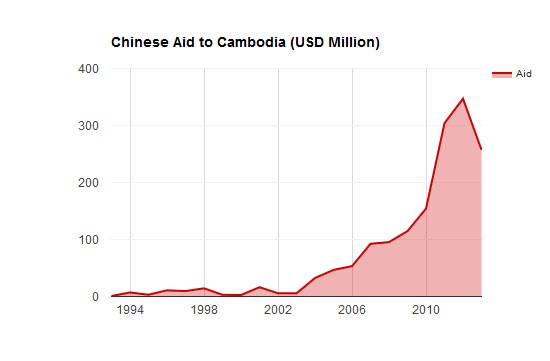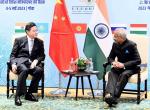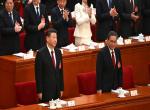The forcible dissolution of Cambodia’s opposition party Cambodia National Rescue Party (CNRP), the seizure of its headquarters and the crackdown on reporters has resulted in condemnation from the West. The Cambodian senate elections that were conducted afterward resulted in a landslide victory for Hun Sen, the reigning leader for 33 years with 11292 votes out of 11670. Other parties such as the Funcinpec had 276 votes, Khmer National United Party with 182 votes and the Cambodia Youth Party having 3 votes. To oppose the crackdown, the US administration under Trump announced aid cuts of $8.3 million to the Cambodian Government, though aid to areas of health, education, agriculture and civil society continue unabated. With the EU also threatening to introduce sanctions, regional concerns have risen on whether this development would act as a catalyst for strengthening Cambodia-China relations.
Building Cambodia-China Relations in the New Millennium
The severity of the Cambodian civil war left a bitter after-taste in the country towards both the West and China. While Hun Sen had once named China as “the root of everything evil”, the turnaround in bilateral relations is evident with China becoming Cambodia’s largest development partner. As an extension of China’s One Belt One Road (OBOR) policy, the aid for infrastructure development has risen with plans of a new airport in the Siem Reap province and a highway from Phnom Penh to the Chinese investment hub, Sihanoukville. Bilateral trade saw multifold increase in 2017 with Cambodian exports having an 18 per cent growth of $634 million while Cambodian imports amounted to $4.48 billion. Sun Chanthol, the minister of Public Works and Transport demonstrates the relevance of Chinese development aid claiming that “most roads, seven large bridges, and the Phnom Penh Autonomous Port have been constructed under concessional loans and aid from China”. Signing of 19 investment pacts with China and further aid pledge of $184 million for socio-economic development has paved the way for mounting Chinese influence in the Khmer country.

With growing economic cooperation, the strategic sphere has also seen closer ties with a Comprehensive Strategic Partnership Cooperation signed as early as December 2010. Since then, China has provided steady military assistance to Cambodia to enhance its defence capabilities. In January 2018, China-Cambodia Inter-Governmental Coordination Committee met to further strengthen areas of cooperation, aiming to reach $6 billion in bilateral trade by 2020 and improving development infrastructure and military defences.
Much of the building of relations between Cambodia and China can be attributed to several factors. Firstly, the USA calling for the reinstatement of the opposition party and urging democratic practices has acted as an irritant in US-Cambodia relations. Trump’s policy of “America First” and withdrawal from mega-trade agreements such as the Trans-Pacific Partnership has been viewed as decreasing its presence in the Indo-Pacific, a gap which has been optimised by China. Secondly, Cambodia views aid from the West as being largely directed only towards NGOs and not working in cooperation with the government. Moreover, unlike Western aid, Chinese development aid is provided without conditions of democratic reform, human or environment rights, a gesture which is largely appreciated by Hun Sen’s Government.
Regional Implications on the Indo-Pacific
Cambodia’s foreign policy is fundamentally premised on being devoid of foreign influence. Over the years, there has been a shift in Cambodian foreign policy as compulsions of securing aid to fund developmental projects has led to growing accommodation of Chinese interests. There are concerns that Cambodia’s dependence on Chinese aid has percolated into shaping its foreign policy, leading to a broadening cooperation with China in the strategic sphere. Hun Sen’s statement of claiming to have imported “thousands or tens of thousands tons” of weaponry in the wake of a joint military exercise with China, portrays the growing synergy between the two states.
Excessive dependence towards China is a serious concern for smaller states in the Indo-Pacific as it affects their bargaining capacities in asserting their national interests, especially when it diverges from Beijing. The demonstrative example of the Sri Lankan dependence on Chinese aid and its consequences are also relevant for Cambodia to exercise relevant caution against excessive dependence. The role of Western powers is often dubious, as efforts to bring about domestic reform through international pressure often results in a further shift towards China. Mere aid cuts from the West are not sufficient in bringing about sustained democratic reform but rather increases Chinese influence in policy-making, as it is apparent in Cambodia.
The decision-making apparatuses of multi-lateral institutions such as the ASEAN and ASEAN-based forums are also affected by ASEAN disunity, especially in securing regional interests of Southeast Asian states. The South China Sea dispute is a prime area of ASEAN-China divergence and Cambodia’s leaning towards China in the outcome of joint statements is indicative of regional implications compromising ASEAN interests in the peaceful resolution of the dispute. In 2012, Cambodia used its chairmanship in the ASEAN to support China by removing any reference to the South China Sea dispute in the ASEAN joint statement. This was followed by Cambodia supporting two other ASEAN members in refusing to release a joint statement criticising the military installations in the South China Sea in June 2016, thus raising serious concerns on ASEAN unity.
In order to bridge the gap of Western aid cuts, countries such as South Korea, Australia, India and Japan can play a significant role in offsetting the dependence of smaller ASEAN states such as Cambodia. Phnom Penh asserts that facilities built by China are not allowed to be used for military presence, according to its Constitution. Cambodia is also seeking to offset excessive dependence by counter-weighing Chinese presence with Japan. The Asian Development Bank, a Japanese-led bank, commissioned an additional $40 million to the $90 million loan for sustainable development of the country. The recently established Quadrilateral Security Dialogue has the potential to be a forum to discuss on how to fill the developmental gap between the Cambodia, Laos, Myanmar and Vietnam (CLMV) countries and the rest of the ASEAN members, and so enhance regional cohesiveness. India, as an Indo-Pacific power that also shares the norms of non-interference with the ASEAN states, is also favorably situated to provide aid and increase its presence in the CLMV countries as a viable alternative for ASEAN states that are cautious of an excessive dependence on China.
End Notes
• Channel News Asia. (2018, February 26). In opposition's absence, PM Hun Sen's party scores landslide win in Cambodia's senate elections. Retrieved from Channel News Asia: https://www.channelnewsasia.com/news/asiapacific/cambodia-pm-hun-sen-party-cpp-landslide-win-9990876
• Kawashima, S. (2018, March 12). Cambodian Views on the U.S., China and Japan. Retrieved from The Diplomat: https://thediplomat.com/2018/03/cambodian-views-on-the-u-s-china-and-japan/
• Lifang. (2018, January 11). China, Cambodia vow to promote comprehensive strategic cooperative partnership in new era. Retrieved from Xinhua: http://xinhuanet.com/english/2018-01/11/c_136888651.htm
• May Kunmakara. (2018, January 5). Trade with China on the upswing. Retrieved from Khmer Times: www.khmertimeskh.com/50100171/trade-china-upswing/
• The Phnom Penh Post. (2018, March 12). Cambodia to get $40M from ADB’s green fund. Retrieved from The Phnom Penh Post: http://www.phnompenhpost.com/business/cambodia-get-40m-adbs-green-fund
(Views expressed are of the author and do not necessarily reflect the views of the VIF)
Image Source: https://news.cgtn.com/news/7745444d78677a6333566d54/share_p.html











Post new comment